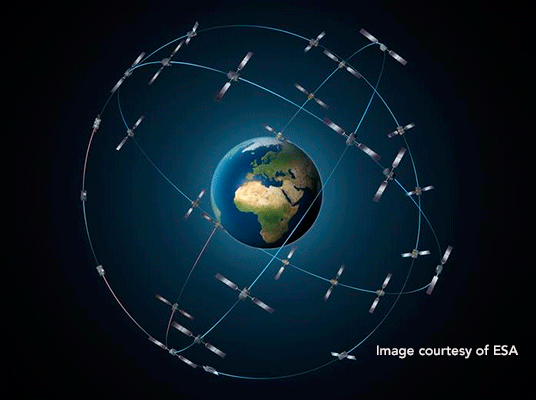The Galileo program crosses the equator

Today, at 13:06 GMT (14:06 CET, 10:06 local time) Galileo satellites 15, 16, 17 and 18 successfully blasted off from Europe’s Spaceport in French Guiana onboard an Ariane 5 rocket. With this new launch there are now eighteen orbiting satellites of the Galileo satellite navigation system.
With the launch of these four new satellites, Galileo has crossed its particular equator: once inserted into orbit and after the validation process, a total of 17 Galileo satellites will be operative, which represents more than half the nominal constellation.
GMV has always had an essential role in the development of many key Galileo elements. Additionally to these system-level activities, and in keeping with its position as a global GNSS player, GMV has always been keen to develop user applications to exploit the valuable infrastructure it was helping to build. This ongoing commitment has produced many fruitful GNSS products over the years. Initially developed for legacy GNSS systems (GPS and GLONASS), many of them are being already upgraded and outcomes show that Galileo is not a dream anymore, but a rewarding reality.
To take only one example from many possible, srx-10, GMV’s software GNSS receiver, has been upgraded to Galileo. srx-10 was initially developed for end-to-end processing of GPS and GLONASS signals, from digital samples to positioning, including all the intermediate steps: acquisition and tracking (with software correlations), generation of observables, message decoding.
Three main drivers guided srx-10 development: computational efficiency, to allow execution in low-end processors, much less powerful than a PC; robustness, by carrying the receiver out of the lab and putting it under stress during exhaustive campaigns through the harshest environments (urban canyons); and, finally, modularity and scalability, paving the way for evolution to other GNSS systems, while preserving the previous accumulated experience. Sticking to this philosophy, srx-10 has showed itself to be a powerful and flexible product that can be smoothly and naturally grafted onto Galileo.
Galileo-only positioning is possible as long as four or more satellites are simultaneously seen by the receiver, which, with the currently-available satellites, occurs already quite often. The figure presents positioning at GMV premises, based on only four Galileo satellites processed with srx-10. The arrival of the next four satellites will increase Galileo availability and, consequently, improve the positioning performance. Anyway, in multi-constellation mode, the available Galileo satellites are already a very valuable complement that improves the overall GNSS performance, especially in harsh environments.